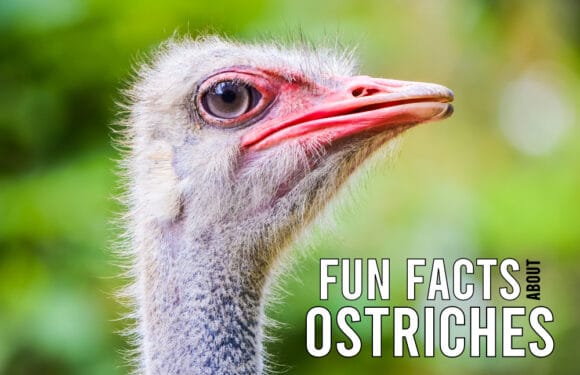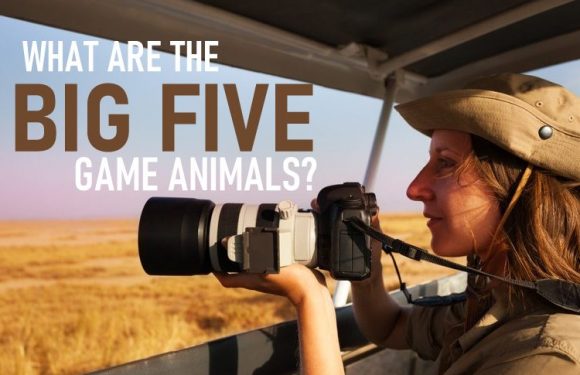
Camouflage is one of nature’s most impressive survival strategies. It enables all kinds of animals to blend effortlessly into their environments including mammals, reptiles, birds, insects, and marine life.
The Science of Camouflage: How It Works
Camouflage operates on the principle of visual deception. When an organism’s appearance is manipulated to match its environment, it fools the mind of predators and prey.
This strategy involves various mechanisms.
- Background matching is where an animal’s coloration and pattern match with its surroundings.
- Disruptive coloration is where an animal’s markings interrupt it’s shape and their outline is broken up.
- Countershading is where an animal has darker colors on the upper body and lighter colors on the underside to reduce shadows and appear less three-dimensional.
- Mimicry is where an organism resembles another object or species to gain protection or deceive prey.
- Masquerade is where the animal not only blends into the background but also resembles an inedible or uninteresting object.




From a neurological perspective, camouflage works by exploiting the visual processing pathways in the brains of other animals. Predators and prey rely heavily on visual cues to navigate their environments, identify food sources, and detect threats. When an animal’s appearance closely matches its surroundings, it becomes less noticeable, reducing the likelihood of being seen. This visual trickery enhances the chances of survival, whether by evading a predator or successfully ambushing victims.
Evolution has played a pivotal role in the development of camouflage traits. Over generations, animals with effective camouflage are more likely to survive, reproduce, and pass on their genes, thereby perpetuating these advantageous traits within populations.
25 Animals With Incredible Camouflage
1. Chameleon (Chamaeleonidae spp.)

Chameleons are synonymous with color-changing camouflage, a defining trait that allows them to blend into a variety of environments. Native to regions ranging from Madagascar to Africa and parts of Asia, chameleons can alter their skin color and pattern in response to changes in their surroundings, temperature, and mood. Chameleons achieve this through specialized cells which work together to produce a wide spectrum of colors and patterns. Their zygodactylous feet and prehensile tails further aid in their camouflage, allowing them to move and remain hidden within their arboreal habitats.
2. Leaf-Tailed Gecko (Uroplatus spp.)

Leaf-Tailed Geckos, primarily found in Madagascar, have flattened bodies and leaf-like projections that look like leaves and bark. This exceptional camouflage not only protects them from threats but also aids in hunting. These geckos sit motionless on branches and ambush insects with stealth. Their skin patterns are beautifully designed, featuring grooves and textures that replicate the natural contours of their habitats.
3. Orchid Mantis (Hymenopus coronatus)

The Orchid Mantis is a botanical marvel that resembles delicate orchid flowers. Native to Southeast Asia, this mantis uses its vibrant colors and patterns to blend into its floral surroundings. The mantis’s flower-like appendages and bright hues make it appear as a part of the plant, where it ambushes pollinators such as bees and butterflies. Meanwhile, predators mistake the mantis for an inedible flower.
4. Snow Leopard (Panthera uncia)

The Snow Leopard’s stunning coat is perfectly adapted to its mountainous, snowy habitat. With thick, smoky-gray fur adorned with black rosettes and spots, these felines blend into rocky outcrops and snow-covered landscapes. As apex predators in their environment, their natural camouflage allows them to hunt creatures such as ibex and marmots.
5. Potoo Bird (Nyctibius spp.)

Potoo Birds are known for their ability to blend into nighttime environments. During the day, they perch motionlessly on branches, their mottled plumage and facial patterns simulate broken branches or tree bark. But at dusk, they emerge to hunt insects. Their large, reflective eyes enhance their ability to see in low-light conditions.
6. Stonefish (Synanceia spp.)

Stonefish are among the most venomous and well-camouflaged fish in the ocean. Their bodies are covered with spines and textured to look like rocks or coral. This camouflage is a fundamental aspect of their hunting strategy. Stonefish can remain virtually invisible in their surroundings, lying motionless on the ocean floor until prey ventures too close.
7. Arctic Fox (Vulpes lagopus)


The Arctic Fox undergoes a dramatic seasonal color change to match its environment In the winter, its thick, white fur disappears against the snowy landscape, while in the summer, it adopts a brown or gray coat that matches the tundra’s rocky and grassy areas. This adaptability means the Arctic Fox remains hidden throughout the year. Their compact body shape minimizes heat loss, and their thick fur provides insulation against the frigid temperatures.
8. Cuttlefish (Sepia officinalis)

Cuttlefish are some of the most visually impressive camouflaged animals in the marine world. They have an unparalleled ability to change color and texture almost instantaneously. Using specialized skin cells called chromatophores, iridophores, and leucophores, cuttlefish can create complex patterns and colors to match their surroundings or communicate with other cuttlefish. Their dynamic camouflage capabilities allow them to blend into a variety of environments, from sandy seabeds to vibrant coral reefs.
9. Walking Stick Insect (Phasmatodea spp.)

Walking Stick Insects epitomize botanical mimicry. With their slender, twig-like bodies, they hide seamlessly among branches and tree stems. By remaining motionless and mimicking the swaying of twigs in the breeze, these insects can avoid detection from both avian and terrestrial predators. Their coloration and body structure are finely tuned to their specific environments, ensuring maximum concealment.
10. Leafy Sea Dragon (Phycodurus eques)

Leafy Sea Dragons are enchanting marine creatures that look like floating seaweed. It’s a perfect adaptation for life among seaweed beds and kelp forests. Their bodies are adorned with leaf-like appendages that move with ocean currents. They navigate their underwater environments with grace and stealth, avoiding detection while searching for plankton and small crustaceans to eat.
11. Ptarmigan (Lagopus spp.)


Ptarmigans are adapted to thrive in some of the most extreme climates on Earth. Native to Arctic and alpine regions, these birds have seasonal plumage that enable them to blend into their surroundings throughout the year. In the winter months, Ptarmigans don a pristine white coat of feathers, perfectly matching the snow-covered landscapes. As spring transitions into summer, their feathers shift to earthy browns and grays, mirroring the rocky tundra and sparse vegetation. Additionally, Ptarmigans possess feathered feet that act as natural snowshoes.
12. Mimic Octopus (Thaumoctopus mimicus)

The Mimic Octopus is renowned for its ability to imitate a variety of sea creatures. Native to the Indo-Pacific region, this unique octopus can change its color, shape, and texture to resemble other animals. By mimicking these different species, it can deceive both predators and prey. For instance, when threatened by predators, a Mimic Octopus might adopt the appearance of a venomous lionfish to deter attacks, while in the presence of prey, it may present itself as a harmless flatfish to approach unnoticed. Such behavior implies that these octopuses are not merely reacting instinctively but have situational awareness. They are capable of recognizing different scenarios and selecting the most appropriate form accordingly.
13. Clouded Leopard (Neofelis nebulosa)

The Clouded Leopard’s coat has large, cloud-like markings that provide camouflage among the dense underbrush and high canopy of Southeast Asian forests. Their spotted fur is a form of disruptive coloration, which breaks up their outline. These elegant felines are skilled climbers, using their strong limbs and long tails to manuveur in the forested habitat, where they hunt deer, monkeys, and birds.
14. Dead Leaf Butterfly (Kallima inachus)

The Dead Leaf Butterfly stands out as an example of nature’s artistry in camouflage. Native to the dense forests of South Asia, this butterfly has evolved wings that give the appearance of dried, decaying leaves. The wings even have detailed veins, brown and ochre hues, and irregular edges that replicate the natural imperfections of fallen leaves. When at rest, the moth positions its wings flat against surfaces such as tree bark or leaf litter, enhancing the illusion.
15. Praying Mantis (Mantidae spp.)

Praying Mantises are known for their predatory prowess. Their front legs act like natural traps, made for grasping and holding onto victims while they consume them. Part of their success can be attributed to their impressive camouflage. Their elongated bodies and coloration enable them to resemble twigs, leaves, or flowers. Additionally, some species display disruptive patterns and textures on their bodies, further breaking up their outline.
16. Decorator Crab (Mecistocephalus spp.)

Decorator Crabs are intriguing examples of nature’s ingenuity in camouflage. What sets them apart is their unique behavioral strategy—attaching various materials from their surroundings to specialized structures on their exoskeletons. These materials, such as algae, sponges, shells, and debris, provides effective camouflage against predators and also serves as a protective barrier. These crabs are predominantly found in the Indo-Pacific region, inhabiting coral reefs, rocky shores, and seagrass beds.
17. Tawny Owl (Strix aluco)

The Tawny Owl’s mottled brown and grey plumage allows it to hide against the bark of trees and the forest floor. Its intricate feather patterns look like the textures and colors of its habitat, making it nearly invisible during the day. At night, the Tawny Owl’s silent flight and concealed perch enable it to approach prey such as mice, voles, and insects without being detected.
18. Glass Lizard (Ophisaurus spp.)

Glass Lizards possess smooth, shiny scales and a slender body that can easily be mistaken for a snake. This form of camouflage is known as Batesian mimicry. Many predators are wary of snakes and may avoid attacking what they perceive to be a venomous or dangerous reptile. They are found in various regions including North America, Europe, and Asia. Glass Lizards can autotomize their tails when threatened, allowing them to drop their tails to escape predation.
19. Pygmy Seahorse (Hippocampus bargibanti)

Pygmy Seahorses are tiny marine creatures with amazing camouflage. These seahorses have skin textures and colors that mimic the polyps and branches of gorgonian corals, providing perfect concealment. They also have the ability to change color and adjust their body shape to match the specific coral species. Pygmy Seahorses move slowly and gracefully to simulate the natural movement of coral and seaweed.
20. Stone-Tailed Tree Frog (Anotheca spinosa)

The Stone-Tailed Tree Frog has rugged, rock-like appearance allowing it to blend into rocky environments with stunning effectiveness. Native to Central and South America, this frog’s bumpy skin and mottled coloration mirror the textures and colors of stones and rocks. It avoids detection while waiting for insects and other small invertebrates to pass by.
21. Leaf Insect (Phyllium spp.)

Leaf Insects are found in the tropical forests of Southeast Asia, Australia, and the Pacific Islands. These insects possess bodies and wing structures that echo the shape, color, and texture of actual leaves. Their varying shades of green enable them to mimic the appearance of fresh foliage, while some species exhibit browns and yellows to replicate dead or decaying leaves. When at rest, Leaf Insects position themselves among real leaves and synchronize movements with the surrounding vegetation.
22. Flounder (Family Pleuronectidae)

Flounders are adapted to disappear into the ocean floor. As flatfish, flounders possess an asymmetrical body that allows them to lie flat against sandy or muddy substrates. Their upper side is typically mottled with patterns and colors that mirror the surrounding environment, such as grains of sand, pebbles, or seaweed. Additionally, flounders can change the color and texture of their skin through its chromatophores.
23. Vietnamese Mossy Frog (Theloderma corticale)

Vitenamese Mossy Frogs are exceptional examples of amphibian camouflage. Found in the mountainous regions of Vietnam, Laos, and China, this frog exhibits a unique skin texture and coloration that mimic moss-covered rocks and tree trunks. Its bumpy, irregular skin surface is has patterns and shades of green, brown, and gray.
24. Ghost Pipefish (Solenostomus spp.)

Ghost Pipefish have an ethereal appearance. Native to the Indo-Pacific region, ghost pipefish resemble floating pieces of seagrass or soft corals, thanks to their long bodies, translucent skin, and leaf-like appendages. Their slow, undulating movements follow the gentle sway of plant life, contributing to their ghostly appearance. The ghost pipefish’s coloration can vary from pale greens to muted browns and they possess the ability to change their coloration to some extent, allowing them to adjust to different backgrounds.
25. Common Baron Caterpillar (Euthalia aconthea)

The Common Baron Caterpillar lives in the forests of South and Southeast Asia. The larvae typically possess green bodies with a yellow line across its back and pine needle-like extensions. This tactile mimicry not only disrupts the visual profile of the caterpillar but also creates an illusion of depth and complexity. These caterpillars consume the leaves of host plants and undergo multiple molts before transforming into the Common Baron Butterfly.




























































